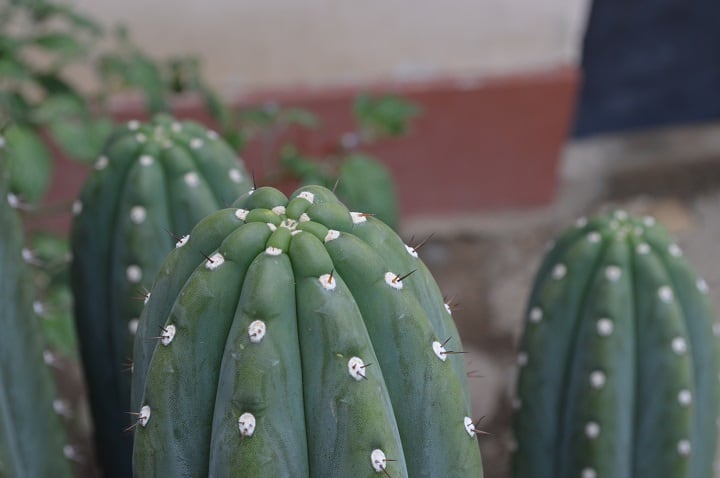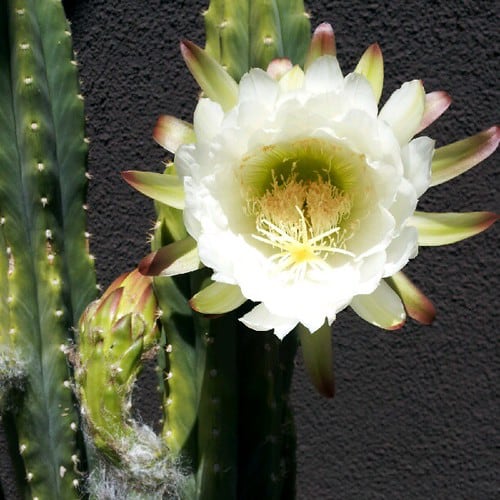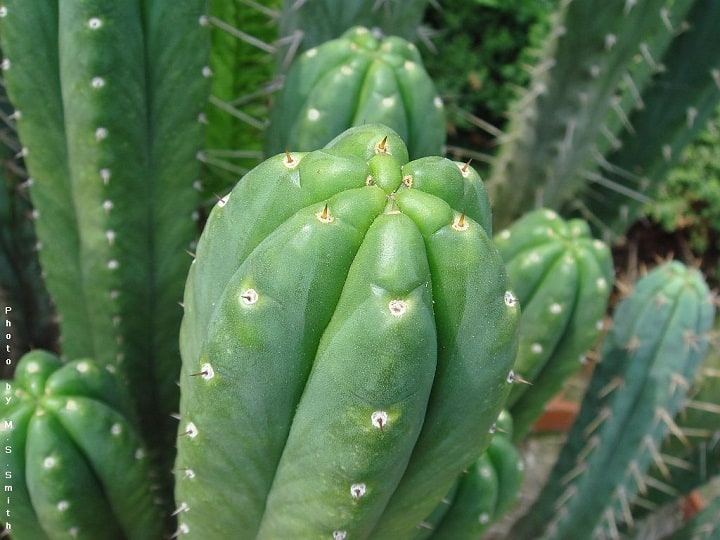Grow San Pedro Cactus Indoors: A Step-by-Step Guide
Are you fascinated by the unique San Pedro cactus? This columnar cactus is not only ornamental but also holds cultural and historical significance. In this guide, we’ll explore how to cultivate this special plant indoors successfully. Get ready to bring a piece of the Andes into your home!

Contents
Origin and Distribution
The San Pedro cactus (Echinopsis pachanoi) has its roots in the Andes mountains of South America, specifically Bolivia, Ecuador, and Peru. Ancient civilizations in this region were well-acquainted with this cactus and used it for various purposes.
While the Echinopsis genus includes 131 cactus species native to South America, the San Pedro is undoubtedly one of the most renowned. Nowadays, it can be grown worldwide with the right conditions, but it remains concentrated in its native Andean habitat at elevations above 3,000 feet. You can also get San Pedro online or offline.

Characteristics
Unlike the towering Saguaro cactus, the San Pedro has a more modest height, typically reaching 20-23 feet at most. It has a distinctive columnar shape with vertical ribs that are wider and less numerous than those of the Saguaro.
The San Pedro cactus boasts a vibrant green hue and formidable spines, making it an eye-catching addition to any xerophytic (drought-tolerant) garden or indoor space.
Active Compounds
One of the reasons the San Pedro cactus is so revered is its production of the hallucinogenic compound mescaline. This alkaloid is present in significant concentrations throughout the cactus, including its flowers and edible fruits.
However, it’s crucial to note that mescaline is a controlled substance in many countries, and consuming it can have severe legal consequences. This guide focuses solely on the ornamental cultivation of the San Pedro cactus.
Growing San Pedro Cactus Indoors
While the San Pedro is a cactus, it has unique growing requirements compared to other desert cacti. Here’s what you need to provide for successful indoor cultivation:
Climate and Light Exposure
Despite its Andean origins, the San Pedro cactus thrives in warm, sunny conditions. When grown indoors, place it near a bright, south-facing window or under grow lights. Avoid direct, intense sunlight, as this can scorch the plant.
Temperature-wise, the San Pedro can tolerate cool winters, but it prefers a consistent temperature range of 65-80°F (18-27°C).

Soil and Watering
The San Pedro cactus requires well-draining soil with moderate fertility. A potting mix containing equal parts potting soil, perlite or pumice, and coarse sand works well.
Be cautious with watering. While the San Pedro has a higher tolerance for moisture than other cacti, overwatering can lead to root rot. During the growing season (spring and summer), water when the top 2-3 inches (5-7.5 cm) of soil are dry. In winter, reduce watering to once every 4-6 weeks.
Propagation
The easiest way to propagate the San Pedro cactus is through stem cuttings. Here’s how:
- Take a 4-6 inch (10-15 cm) cutting from a healthy stem, making a clean cut.
- Allow the cutting to callus over for 7-10 days in a dry, shaded area.
- Prepare a well-draining potting mix (e.g., equal parts potting soil, perlite, and sand).
- Plant the calloused cutting about 2 inches (5 cm) deep in the potting mix.
- Place the potted cutting in a warm, bright location, and water sparingly until roots form (4-6 weeks).
- Once rooted, gradually increase watering and transplant into a larger pot if needed.

Pests and Diseases
Fungal infections aside, you’ll also want to keep an eye out for common cactus pests like mealybugs. These cottony insects can infest the cactus and feed on its sap, potentially spreading viruses.
To prevent pest problems, inspect your San Pedro regularly and isolate any infested plants immediately. You can treat mealybug infestations with insecticidal soaps or neem oil.
Another tip is to ensure good air circulation around your indoor San Pedro to discourage fungal growth and pest establishment.
Repotting and Pruning
As your San Pedro cactus grows, it will eventually need repotting into a larger container. The best time for repotting is in spring.
Gently remove the cactus from its current pot, trying not to damage the roots. Prepare a new pot with fresh, well-draining cactus potting mix. The new pot should be only 2-3 inches wider than the previous one.
After repotting, hold off on watering for a week to minimize stress on the plant. Then resume your normal watering routine.
Pruning isn’t strictly necessary for indoor San Pedros, but you can remove any discolored, dead, or damaged stem segments as needed using clean pruning shears.
With patience and the right care, your indoor San Pedro cactus can reach its full majestic potential over many years. Enjoy watching this fascinating plant thrive!
